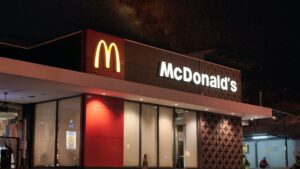Color Psychology Part Two: Marketing with Red
The psychology of red deserves a blog all to itself, as it’s a meaty subject. Like green, red is a double-sided coin, making marketing with red versatile. It’s the color of blood and roses. Flip it for danger or desire, varied shades within each.
If you missed part one of our color psychology series, click here. If you’re caught up, let’s get into it!
Danger
As one of the most visible colors of the color spectrum, red is attention-grabbing, making it the best candidate for emergency vehicles and serious signage.

Stop! That’s one of red’s urgent calls from traffic lights or stop signs. Pull over! if accompanied by blaring sirens.
Red is a warning. We perceive it as such due to years of unconscious training, of coming to a halt when lights turn red, heeding “do not enter” signs, and so on.
Seeing the color red quickens the pulse, as opposed to "seeing red," an expression of anger.
It has several negative connotations off the road too. Raging fires. Poisonous berries or animals. Essays and exams marked all over in red pen (a cause for stress unless your professor doesn’t prescribe to red-pen grading).
Red is a metaphorical warning as well. People point out “red flags” in relationships, like one party being manipulative or clingy. It’s currently a trend across social media, the red flag emoji overrunning the internet.
All that said, be careful when marketing with red. For example, you probably wouldn't want to use bright red packaging for your line of yoga mats. It would do better for a product tied to, say, safety, like a security system.
The darker side of red
Red is more than a warning color. It's a hellish hue that can stir up fear.
The devil is often depicted as a sinister red man with horns protruding from his head. Hell itself, the so-called underworld of tortured souls and immense suffering, is awash in red flames.
Red is blood and gore, a staple in horror films and TV shows (just look at the movie posters). Think Carrie, the prom queen of horror, doused in pig's blood. Has there ever been a bloodless horror flick? In that same genre, red is creepy clown hair, "red rum" written on walls, and eerie lighting.
Red is associated with war and violence too, another avenue of darkness in which one doesn't enjoy lingering. (Yet another reason to tread carefully when weaving red into your branding.)
Passion
On the flip side, red is a color of desire and passion.

When you think of romance, red is likely the first color to pop into your head.
Valentine's Day is as commercial a holiday as they come, but people still celebrate every year with wine, doe-eyed stuffed animals, and cards stamped with recycled puns. Brands have a lucrative field day with it, printing money as they sell pink and red goodies in the shape of hearts.
The other celebration of romance, a wedding, is not devoid of love's favorite color. While many Americans expect a bride to be draped in white, red is the color of choice in many other cultures. Being an auspicious color in China, it’s common for brides to wear red, same goes for Indian brides.
Red is linked to desire. Through five experiments conducted by A.J. Elliot and D. Niesta, it was determined that the color red enhances the attraction a straight man has toward a woman. It's biological.

The song “Lady in Red” by Chris de Burgh refers to when he saw his wife in a red dress, a transcendent moment of impassioned desire.
Red lipstick, roses, and velvet. Strawberries and red apples. What sings with romance more than red?
Appetite
The psychology of red involves eating. Have you noticed the pattern of fast food restaurants having red logos? KFC, Wendy’s, McDonald’s, Pizza Hut, Chick-fil-a, the 99…this list is inexhaustible. This isn’t just because red stands out, it’s also an appetite stimulant.
A blue plate serves to suppress your appetite, while a red plate supercharges it. If you're planning on opening a fast food chain, you know what to do.

Honorable mention to the misleading "red herrings" of the mystery world, though there's not enough evidence to support that red is a generally untrustworthy color.
More brands that use red: Netflix, Kellogg’s, Coca-Cola, Lego, Levi’s, Target, and Pinterest.
That's a wrap on the psychology of red. Click here for part three.
Create colorful, Instagram-style digital stories for your brand with STORYSOFT. Learn more.
Book a Demo
See how to bring personalized digital experiences to life for your brand
During the call you will:
- Hear how it works
- See example digital Stories
- Walk through the analytics
- Get your questions answered